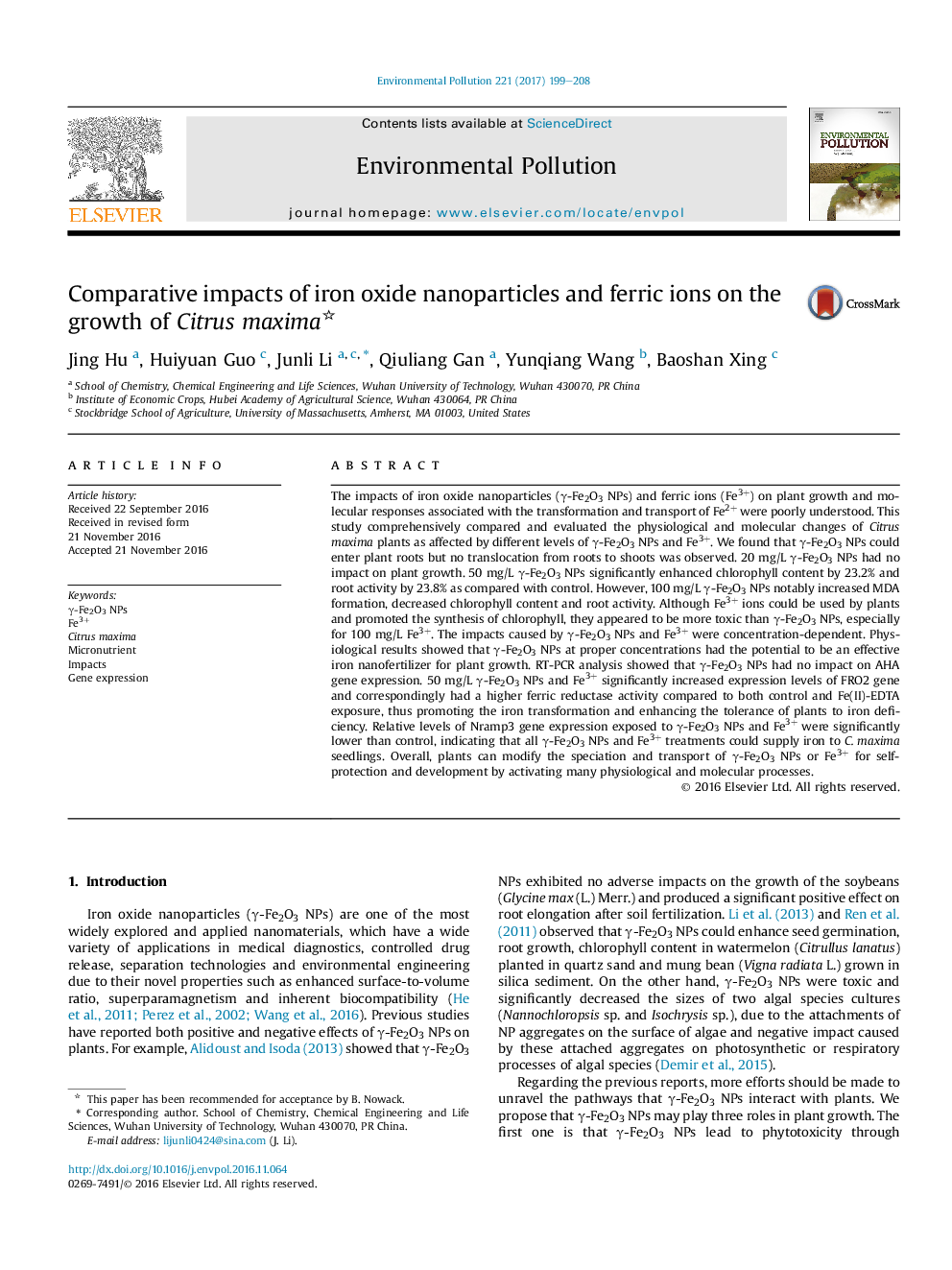| کد مقاله | کد نشریه | سال انتشار | مقاله انگلیسی | نسخه تمام متن |
|---|---|---|---|---|
| 5749464 | 1619152 | 2017 | 10 صفحه PDF | دانلود رایگان |
- γ-Fe2O3 NPs entered but did not translocated upward in the Citrus maxima plants.
- γ-Fe2O3 NPs showed no impact on plant biomass and root length.
- The impact of γ-Fe2O3 on chlorophyll content was dependent on NP concentration.
- RT-PCR analysis revealed that plants could activate molecular responses to transform and utilize both γ-Fe2O3 NPs and Fe3+.
The impacts of iron oxide nanoparticles (γ-Fe2O3 NPs) and ferric ions (Fe3+) on plant growth and molecular responses associated with the transformation and transport of Fe2+ were poorly understood. This study comprehensively compared and evaluated the physiological and molecular changes of Citrus maxima plants as affected by different levels of γ-Fe2O3 NPs and Fe3+. We found that γ-Fe2O3 NPs could enter plant roots but no translocation from roots to shoots was observed. 20 mg/L γ-Fe2O3 NPs had no impact on plant growth. 50 mg/L γ-Fe2O3 NPs significantly enhanced chlorophyll content by 23.2% and root activity by 23.8% as compared with control. However, 100 mg/L γ-Fe2O3 NPs notably increased MDA formation, decreased chlorophyll content and root activity. Although Fe3+ ions could be used by plants and promoted the synthesis of chlorophyll, they appeared to be more toxic than γ-Fe2O3 NPs, especially for 100 mg/L Fe3+. The impacts caused by γ-Fe2O3 NPs and Fe3+ were concentration-dependent. Physiological results showed that γ-Fe2O3 NPs at proper concentrations had the potential to be an effective iron nanofertilizer for plant growth. RT-PCR analysis showed that γ-Fe2O3 NPs had no impact on AHA gene expression. 50 mg/L γ-Fe2O3 NPs and Fe3+ significantly increased expression levels of FRO2 gene and correspondingly had a higher ferric reductase activity compared to both control and Fe(II)-EDTA exposure, thus promoting the iron transformation and enhancing the tolerance of plants to iron deficiency. Relative levels of Nramp3 gene expression exposed to γ-Fe2O3 NPs and Fe3+ were significantly lower than control, indicating that all γ-Fe2O3 NPs and Fe3+ treatments could supply iron to C. maxima seedlings. Overall, plants can modify the speciation and transport of γ-Fe2O3 NPs or Fe3+ for self-protection and development by activating many physiological and molecular processes.
169
Journal: Environmental Pollution - Volume 221, February 2017, Pages 199-208
